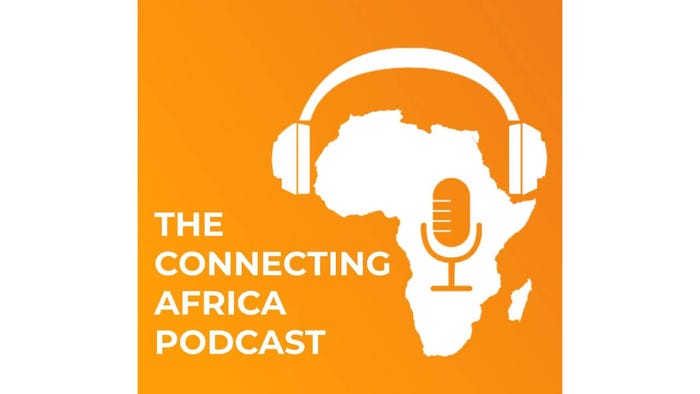Africa to lead MFS growth in next five years - Ericsson and Juniper ResearchAfrica to lead MFS growth in next five years - Ericsson and Juniper Research
A new report from Ericsson and Juniper Research predicts that almost half of all African mobile subscribers will use mobile financial services (MFS) by 2029 and African MFS transaction values will grow by 114% in the next five years.

African telecoms operators believe that almost half of all African mobile subscribers will use mobile financial services (MFS) by 2029, and MFS transaction values in the region will grow by 114% in the next five years.
That's according to a new report from Ericsson and Juniper Research, titled: "What Will Drive Mobile Financial Services' Growth?" which suggests that Africa is poised to have the largest MFS growth globally due to rising affluence in the countries involved and a shift to advanced services.
Globally, MFS transaction values are expected to grow by almost 80% over the next five years on average, while Asia-Pacific will see growth of almost 54%, and Africa leads with over 114% growth expected.

(Source: Juniper Research)
"Within Africa in particular, the average transaction value per user will increase. This is related to the evolving levels of trust we are seeing in the MFS area – as users become more familiar with MFS, they gain trust and they start doing a greater volume and value of digital transactions," the report said.
The report surveyed senior decision-makers from 46 mobile network operators (MNOs) across 35 countries – in Africa that included 22 operators in 17 countries.
Ericsson said the report was inspired by the GSMA's Mobile Money tracker and based on GSMA data. Of 315 live mobile money services, around half are in sub-Saharan Africa alone, which is also reflected in the countries chosen for the Ericsson-Juniper survey.

(Source: Juniper Research)
The report found that telcos are prioritizing MFS for revenue diversification and their shift into digital service providers.
The report also found that MFS is reshaping revenue models, leaning towards advanced offerings like micro-finance and investments. Within Africa, there was strong enthusiasm for offering insurance services, reflecting the well-established market for micro-insurance in the region.
Africa leads MFS user growth
The researchers believe that in five years' time 40% of mobile subscribers globally will actively use MFS, up from just 29% now.
In Africa, currently 36% of mobile subscribers actively use MFS and this will grow to 49% over the next five years.
Africa currently has the highest MFS usage by mobile subscribers of any region, and this will continue to be the case in five years' time, while the Americas are expected to grow by 72% over the next five years.
.jpg?width=700&auto=webp&quality=80&disable=upscale)
(Source: Juniper Research)
The authors believe this signals a substantial transformation, positioning MFS as a key element in the shift among telcos to become digital service providers, foreseeing 45% growth specifically in their MFS revenue.
"What is striking is how massive the changes coming for mobile financial services are. MNOs we surveyed are expecting advanced services to be transformative, both for their service portfolios and for their revenue, and we expect this to have an enormous impact over the next five years," said Nick Maynard, VP of fintech market research at Juniper Research.
When asked about the key factors that had driven operators' MFS success to date, the majority of those surveyed cited incentives to consumers like rewards and loyalty programs as the top factor. Other important factors included expanded agent and merchant networks and COVID-19's impact on the switch to contact-free digital payments.
Ericsson's head of MFS, Michael Wallis-Brown, said that MFS could be transformative for telcos, "positioning them as digital innovators and unlocking invaluable new revenue streams."
He believes that integrating MFS will enable telcos to anticipate consumer demands, adapt to market trends, and stay competitive.
However, regulatory challenges, enduring cash preferences, and security concerns still pose significant obstacles to MFS's growth, according to the researchers.
*Top image source: Image by Freepik .
— Paula Gilbert, Editor, Connecting Africa
*Top image is of (Source: ).


.jpg?width=700&auto=webp&quality=80&disable=upscale)
_(1)_(1).jpg?width=700&auto=webp&quality=80&disable=upscale)
.jpg?width=700&auto=webp&quality=80&disable=upscale)
_(1).jpg?width=700&auto=webp&quality=80&disable=upscale)
.jpg?width=700&auto=webp&quality=80&disable=upscale)
.jpg?width=700&auto=webp&quality=80&disable=upscale)
_(1).jpg?width=700&auto=webp&quality=80&disable=upscale)
.jpg?width=700&auto=webp&quality=80&disable=upscale)
.jpg?width=800&auto=webp&quality=80&disable=upscale)

.jpg?width=700&auto=webp&quality=80&disable=upscale)